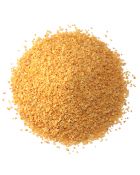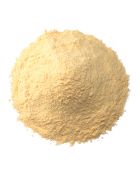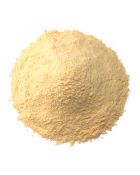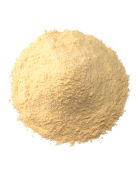How could the coronavirus impact your garlic supply?
We have been following the novel coronavirus epidemic since the beginning. This post was originally published on February 7, 2020 but has been updated on March 6, 2020, as new information has been released.
What is the coronavirus?
As of March 6, 2020 there have been 100,656 confirmed cases of COVID-19 around the world, according to data from John Hopkins University. Researchers in China have identified that there are two main strains of the virus that are circulating in humans and causing the current pandemic.
Recently, Du Bin, the chairman of the critical care medical branch of the Chinese Medical Association, advised the public that the median incubation period for patients with the coronavirus is five to seven days, 14 days at the maximum.
This comes amid a decline of new confirmed COVID-19 cases in mainland China following strict, mandatory government regulations throughout the country. Now, the number of emerging cases outside of China have exceeded new cases in the country. This has led Chinese officials to begin seeking ways to control the spread outside of China and find ways to protect the world from future outbreaks.
What measures have countries taken to stop the spread?
The respiratory illness now called COVID-19, was first reported in December 2019 in Wuhan, China. Since then, it has spread rapidly, with over 80 countries around the world confirming cases of the novel coronavirus. So, what has been done around the world to stop and/or contain this epidemic?
Italy, which is experiencing the worst outbreak outside of China, has just followed suit with China, Japan and Iran, to close all schools across the country. According to the United Nations, 22 countries on three continents have shut down schools to prevent the spread of COVID-19.
International travelers are now experiencing a number of restrictions as people who live in or have visited affected areas since the outbreak occurred, have been banned from entering countries such as the United States, Vietnam and Bahrain.
Several organizations have also committed to providing aid to stop the outbreak. The most significant being the International Monetary Fund announcing a $50 billion aid package, the World Bank pledging $12 billion and the United States government offering $8.3 billion to fight the epidemic.
What could happen to my garlic supply if the coronavirus is not contained?
As China produces more than 80% of the world’s garlic, the situation has caused a major disruption in the world’s supply. The price of garlic, wholesale and retail, has risen to the highest levels it’s been in recent years.
Factory closures in China earlier this year, implemented as a quarantine measure, caused crimped industrial production. The workforce has also seen a shortage of labor, as Chinese citizens have been asked to stay in their homes in order to prevent the spread of COVID-19.
Most recently, there have been a number of shipping issues between China and the US. According to a report by the Wall Street Journal, “containership operators have cancelled nearly 60 trans-pacific sailings from China to the ports of Los Angeles and Long Beach, California in the first quarter and more than 110 to all of North America.”
Where can I find a reliable source for garlic?
Businesses looking to mitigate risks should consider exploring other origins to safeguard against supply chain disruption — such as Olam Spices’ virus-free California grown garlic.
Similarly, existing US garlic customers should look to actively cover 2020 requirements as early as possible to avoid a potential tightening of supply as demand strengthens.
How can I de-risk my supply chain?
Our US garlic operation offers a stable, dependable, high-quality source of California grown garlic — providing a competitive advantage against unpredictable market conditions.
Along with providing consistent flavor, our California garlic has demonstrated compelling cost-in-use benefits. Meaning, when compared to Chinese garlic, you can use less California garlic to achieve the same flavor, helping to reduce cost.
We can also provide full traceability of our product from seed to factory, one of the advantages of AtSource, Olam’s sustainability platform. Our comprehensive, sustainable sourcing solution also provides customers a chance to understand their product's footprint by tracking environmental and social metrics at each stage of its journey.
We encourage all interested parties to contact our sales team to organize a more detailed discussion. We urge you to reach out as soon as possible, as the market situation is tenuous and we would need to engage quickly to evaluate your needs.
What is the coronavirus (COVID-19)?
By now, we are all very familiar with the Coronavirus and most of us have begun to experience its impact on businesses and the general public.
The new coronavirus, named “COVID-19,” belongs to a large family of about 100 viruses that are commonly found in animals such as camels, cattle, cats and bats. In rare cases, the virus can spread to humans, called a spillover event, which can cause disease.
Of the seven coronaviruses that are known to cause human disease, four are mild, while the other three, SARS (severe acute respiratory syndrome), MERS (Middle East respiratory syndrome) and COVID-19 (coronavirus disease 2019), have more serious outcomes.




